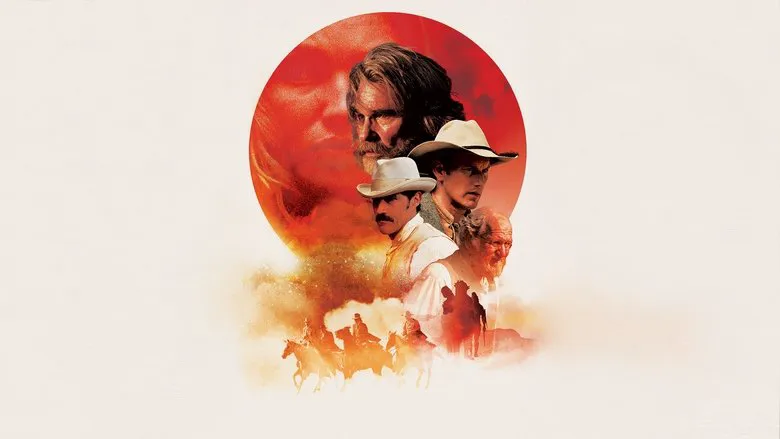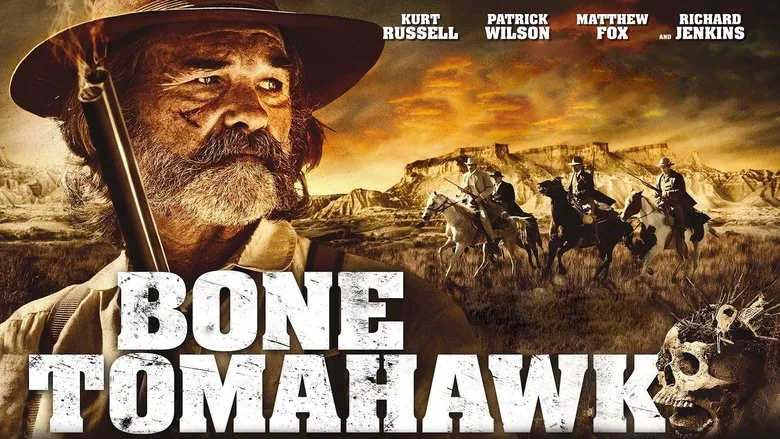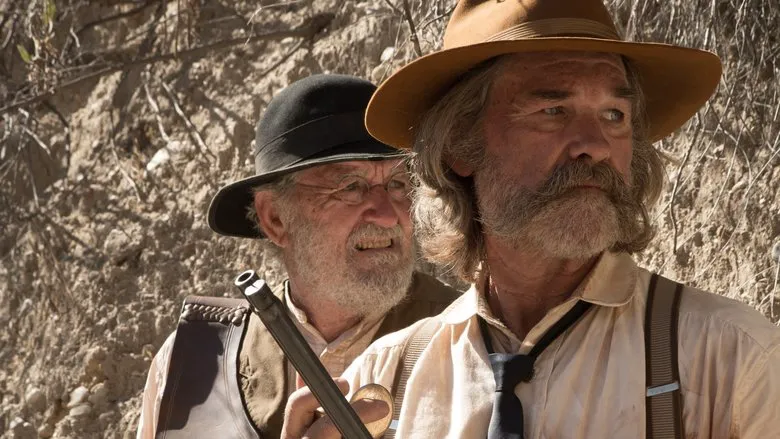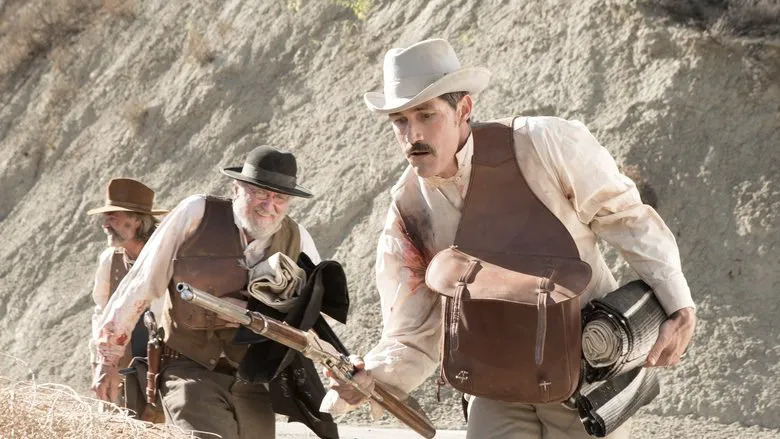Bone Tomahawk: A Grisly Western That Will Hook You
A surprisingly vibrant blend of a cowboy road movie and a cannibal slasher, Bone Tomahawk will keep fans of both genres glued to the screen.
Set in a small Wild West town on the edge of civilization, bordering Indian territory, the film opens with a daring night raid. Several townspeople are murdered, and a deputy, a prisoner, and the local doctor are taken captive. The shocked town assembles a rescue expedition. A stern sheriff with unwavering principles, a garrulous old doctor, a flamboyant and experienced hunter, and a cowboy—the kidnapped woman’s husband—embark on a three-day trek across the prairie. The cowboy is more of a liability to the team, having recently broken his leg and struggling to move without a crutch, let alone ride a horse. However, he is the most motivated to confront the mysterious cave-dwelling tribe.

The long pre-production period led to significant changes in the cast, with Peter Sarsgaard, Jennifer Carpenter, and Timothy Olyphant all departing the project at various times.
It’s hard to recall another instance where the Western and horror genres have intersected so effectively. While such combinations may have appeared before, they rarely left a lasting impression. Bone Tomahawk, however, has a real chance of being remembered. The film expertly maintains tension, the director demonstrates a remarkable ability to blend dynamism and depth, and the casting is simply outstanding. While it may not become a cult classic, Bone Tomahawk is poised to be one of the most memorable films of the year.

The director initially planned to shoot “Bone Tomahawk” in Mexico, then in Utah, but with a modest budget, the producers convinced Zahler to settle on California.
A Director’s Calling Card
What exactly is this film? It’s essentially a “calling card” movie. Writer and director S. Craig Zahler had previously dabbled in screenwriting, but only one of his works had made it to the big screen. Nevertheless, Zahler is considered one of Hollywood’s most promising writers, with Michael Mann and Park Chan-wook expressing interest in directing his scripts. However, these are projects for the future, and Zahler, like any ambitious filmmaker, is eager to make his mark as soon as possible. This led to the independent project Bone Tomahawk, a Western with elements of a gory horror film. Even this project faced delays, remaining in production since 2012, but it has finally arrived, showcasing the author in the most striking way.

A Western with a Twist
In the wake of Tarantino’s Django Unchained and the anticipation of The Hateful Eight, few dare to venture into the prairies with their own Western projects. It’s understandable; a classic Western is unlikely to attract audiences today, and postmodern efforts like Cowboys & Aliens have flopped. The genre has become a niche for the most persistent filmmakers who understand what they’re doing. Zahler clearly knows what he’s doing. Bone Tomahawk begins as a typical story of cowboys versus Indians—one group encroaches on the other’s territory, leading to conflict, revenge, pursuit, and retribution. For nearly a hundred minutes, the film doesn’t attempt to transcend the genre, nor does it need to. The colorful characters are adept at riding, both literally and figuratively. Only in the final quarter does the film turn crimson, featuring a graphic and disturbingly realistic execution scene, and unleashing death. The rest is a leisurely road movie, where dialogue takes precedence over action. Here, comparisons to Quentin Tarantino arise, as the digressive conversations, often initiated by the talkative old man, resemble those in Reservoir Dogs or Pulp Fiction—seemingly inconsequential, yet perfectly characterizing the characters.

Character-Driven Horror
Again, one must admire how the debut director skillfully develops the characters. Several scenes in the first part of the film reveal the most important aspects—the viewer understands the sheriff’s code, the relationship between Arthur and Samantha, and John Brooder’s disposition. This ability is highly valued by audiences and is another asset in S. Craig Zahler’s future repertoire. Add to that his ability to work on location—the desolate hills are strikingly picturesque—and his capacity to work within a large team, and it’s clear that his “calling card” has been successfully delivered. Bone Tomahawk will undoubtedly accelerate Zahler’s screenwriting projects and his subsequent directorial endeavors.
As for the actors, whom we’ve barely mentioned, there’s little more to say. Besides the fact that Kurt Russell, Patrick Wilson, and Matthew Fox are all accomplished masters, they have all captured the essence of the era. Russell’s bushy mustache, Fox’s white suit, and Wilson’s pain and curses, combined with the perilous journey, make the film come alive. And that’s what makes it so compelling. So, don’t be quick to bury Westerns; they still have some life in them yet.